Post title...
Posted
|
Views: 1
art: 1009
descipcion: strapless con manga
detalles: morley rayado
stock: 200
Post title...
Posted
|
Views: 1
art: 1008
descripcion: blusa batick
detalles: fibrana batick c/puntilla
stock: 50
Post title...
Posted
|
Views: 1
art:1007
descripcion: paisana sedita
detalles: seda con spandex
stock: 70
narssisa
Post title...
Posted
|
Views: 1
art: 1006
descripcion: remera crepe
detalles: crepe combinado c/poplin talle unico
stock: 100
Post title...
Posted
|
Views: 1
art: 1005
descripcion: top bretel 45
detalles: morley rayado
stock: 200
Post title...
Posted
|
Views: 1
art: 1004
descripcion: cuello volcado
detalles: morley print talle unico
stock: 50
morley rayado
Posted
|
Views: 1
art: 1003
descripcion: escote bote
detalles: morley rayado
stock: 60
Post title...
Posted
|
Views: 1
art: 1002
descripcion: top parche
detalles: morley talle unico
stock: 200
narssisa
verano 2016
Posted
|
Views: 5
ART: 1001
DESCRIPCION: top paisana
DETALLES: fibrana estampada talle unico
STOCK: AGOTADO
Glacier National Park: A Hiker's Paradise
Posted
|
Views: 553
Glacier National Park
I had heard Hole in the Wall Campground was among the nicest and most scenic in the park. And since this park is Glacier National Park, you can bet it’s worth the effort to get there. There are more than 1 million acres in Glacier National Park and not a one of them is anything but jaw-dropping gorgeous. In that 1 million acres are more than 150 named peaks higher than 8,000 feet, 131 named lakes and more than 700 miles of hiking trails to connect them all. The sheer density of peaks and the large, pristine lakes render the 14- or 15-hour drive from Grand Junction to Glacier easily worth it. It is a hiker’s paradise, a backpacker’s wonderland and a climber’s playpen. The original plan was to split our hiking group to start at opposite ends of a long scenic loop. One group would leave from Bowman Lake, the other from Kintla Lake. Each group would canoe the long lakes (seven miles in the case of Bowman Lake), then hike from there to Hole in the Wall campground. At Hole in the Wall, we’d swap car keys and each continue our hikes in opposite directions, thus avoiding pre-trip car shuttles. This sounded like fun and an interesting take on dealing with a loop hike and car shuttles, but some in this group of old friends don’t get to see each other very often. We opted for the more social up and back version of a hike to Hole in the Wall. A trail runs along the bank of Bowman Lake for all of the seven miles to the Bowman Lake campground for those who would like to hike, but we opted to canoe. Most in the group had never combined a canoe trip with a hiking trip, so half the adventure would be in traveling by boat to start the trip. Little did we know what trip organizer Dan Stone had in store. We picked September for the supposedly warm, clear days that typify that month in the Glacier area. We arrived at Stone’s house, a few hours south of Glacier, to steady rain. On the agenda that evening was tromping around Stone’s wooded property in the rain looking for two long poles we could use to lash three canoes together. Stone’s plan was to lash the canoes together and use one small outboard motor to race us across Bowman Lake. This blatant use of petrochemicals and spark plugs flew in the face of what some of us would consider a wilderness trip, but we had to admit it sounded sort of fun, and cutting poles in the forest to use in “building” our boat had an element of “adapt and innovate” that appealed to us. A backcountry trip in Glacier takes planning. Backcountry permits must be applied for months in advance and there is no guarantee of getting one. First stop for any trip is the Apgar Ranger Station at the south end of splendid Lake McDonald to pay the necessary fees, pick up the permit and watch the mandatory grizzly bear video. Bears. They call Glacier home. Hiking in Glacier is to hike with Griz. Because bear evidence is common and prevalent while hiking in Glacier, the thought of bears is never far from one’s mind. How fantastic would it be to see a grizzly bear? Or maybe not. Perhaps from a distance. It is mandatory for all hikers to carry bear spray when in the back country. We saw at least one hiker with a gun, but statistics clearly show that bear spray is far superior protection than a gun. Bears, black bears and grizzly, are out there, so safety precautions need to be taken, but bears are not a good reason to stay home. According to statistics compiled by Backpacker Magazine, there have been 27 fatal bear attacks in North America since 2000, resulting in 29 deaths. Of those,15 were in Canada, three were in Alaska, two were in Tennessee, and single fatal attacks happened in New York, New Mexico, California, Pennsylvania, Colorado, Utah and Montana. Black bears were responsible for 17 of those attacks, grizzlies accounted for 10. The average is three fatalities a year out of the millions of people who travel in the backcountry each year or who live in or near bear habitat. Backpacker reports that 26 people are killed each year by dogs. Some 90 fatalities are attributed to lightning each year. Because of the bears, all overnight backcountry travelers are required to camp in designated campgrounds. Each campground has a communal cooking and eating area and poles to hang food. These kitchens are away from tent sites. The idea is to keep all food or anything that might be of interest to a bear in a bag hung high on a pole in the kitchen. Nothing of interest to a bear should be in or around the tents. The thinking is even if a bear happens to wander in to camp, it will be more interested in the kitchen than a tent site. And if food is always out of reach, bears will learn there is no reward for visiting a campground and stay away. We arrived at the Bowman Lake boat launch a charmed group. The on and off rain of the morning gave way to bluebird skies. Spirits soared as we gaped at the scenery. We lined up our canoes, lashed on the two poles and stood back to admire our tri-canoe. We impressed ourselves with our newfound nautical design skills. The boat was stable and ran true. We loaded up and launched. While the outboard was a little too loud to talk amongst ourselves comfortably, and emitted a slight but offensive exhaust smell, cruising across spectacular Bowman Lake under crystal skies with good friends was nothing less than sublime. In a little more than one hour we cruised the seven miles to the opposite end of Bowman Lake and our first night’s camp. Because of how camps in Glacier are set up, the campgrounds are very social. Everybody ends up together in the kitchen area. There probably are people who prefer to be alone at these camp kitchens, but we didn’t meet any. We gregariously introduced ourselves to one and all. We shared food. We shared drinks. We shared laughs and the company of kindred spirits in a mountain paradise. Stone had prepared well by bringing along extra appetizers and drinks to share with the folks he knew we would meet at camp. We had a boat for this camp, remember, so weight was no issue on day one. Be prepared to interact socially with other hikers in Glacier camps and you will be richly rewarded with good company. While weight was no issue on the first day, all that changed as we pared down gear for the backpack into Hole in the Wall campground the next morning. The good times kept rolling as we hit the trail first for the summit of Brown Pass, and eventually on to Hole in the Wall. The mandatory bear movie we watched prior to our trip indicated that talking on the trail is a good way to avoid surprising bears. We were in no danger of surprising a bear or any other creature. All six of us seemed to be talking at once. The weather was glorious, the scenery divine and the company terrific. We kept up a steady din of conversation most of the morning until the gradient of the trail steepened as Brown Pass got serious. The combination of a steep, switchbacking trail and hot mid-day sun beating down combined to quiet us down as each settled into a slog up Brown Pass. The trail was hot and steep, but the scenery spectacular. Boulder Peak jutted skyward, adorned with the Hole in the Wall waterfall of many hundreds of feet. It was a walk through a picture postcard. We lunched at the Summit of Brown Pass at the base of Chapman Peak. From there we could see and Mt. Cleveland, 10,466 feet and the highest in the park. Mt. Cleveland is one of six peaks higher than 10,000 feet in the park. From Brown Pass one can hike down to the Goat Haunt area of the park and world famous Waterton Lake, where one can board a boat and cruise into Canada. The adjacent Waterton Park in Canada was combined with Glacier National Park in 1932 to form the world’s first cross-border park called Waterton-Glacier International Peace Park. The park recognizes the long-held friendship between the U.S. and Canada but was also established in recognition that the geology, wildlife and general ecosystem is not affected by an international border. Together, the two parks total 1,720 square miles. It is the first international peace park ever developed of the 170 now in place around the globe. Over lunch at the top of Brown Pass, we did what many do in Glacier. We sat and discussed ideas for more trips. Driving to Waterton Park and staying in the famed Prince of Wales Hotel would be fun, we agreed. Then we could take the boat across Waterton Lake to the trailheads at Goat Haunt and fit in some backpacking before going back to the hotel. So many options are available to the hiker in Glacier that this sort of discussion could go on forever. Just because lunch was at the top of Brown Pass doesn’t mean its all down hill from there to Hole in the Wall. To the contrary, the trail climbs higher to the cirque that houses Hole in the Wall. The climb is worth it as the trail clings to the side of steep slopes. At the camp, Thunderbird Peak rises from across the valley looking like a Sentinel for all who camp at Hole in the Wall. Our dinner companions that night were four park rangers who arrived to make some repairs to the pit toilet outhouse and to study what might be called camp sprawl. They were a good-natured group, if not a bit clouded in park bureaucracy. The weather was holding steady and gorgeous. Plans were made to climb Boulder Peak the next day. Climbing Boulder Peak involves hiking the trail to the top of Boulder Pass before peeling off to pick a route up the step grass slopes to the summit. The Boulder Pass trail is worth the price of admission all by itself. It is another of Glacier’s spectacular trails. And, as you can guess, the sights from the summit of any peak in Glacier are an eye-popping view of hundreds of more peaks all around. It was possible to take in this view from a large stone throne built out of the slate-like rocks on the summit. We don’t know the full story of this throne. It didn’t insult our sensibilities, and struck us as rather clever, in fact, but in reporting its existence to one of the rangers, she expressed chagrin that this non-natural throne keeps appearing on the summit of Boulder Peak, even after she herself had previously dismantled it and scattered the rocks. Some in the group stopped to swim in the glacier-fed lakes on the way down to wash off the trail-dust of three days. I chose the natural waterfall shower conveniently flowing just below camp. This camp cannot be improved upon. Day four was the hike back to the head of Bowman Lake. Some in our group took the time and effort to climb Chapman Peak on the way down. We arrived back at the Bowman Lake camp where we had stashed provisions. Stone set about preparing his appetizers and drinks for our group and other campers. We ate well, enjoyed the company of new friends, built a fire and talked long into the night under the stars. Tomorrow we would re-build our tri-canoe and motor back to vehicles and civilization. We stayed up late that night. Nobody wanted this trip to end.
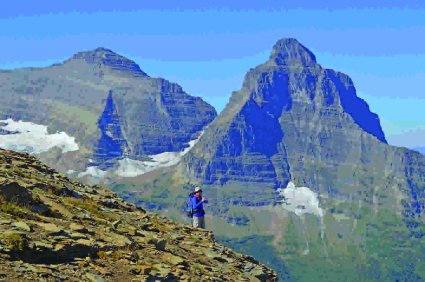
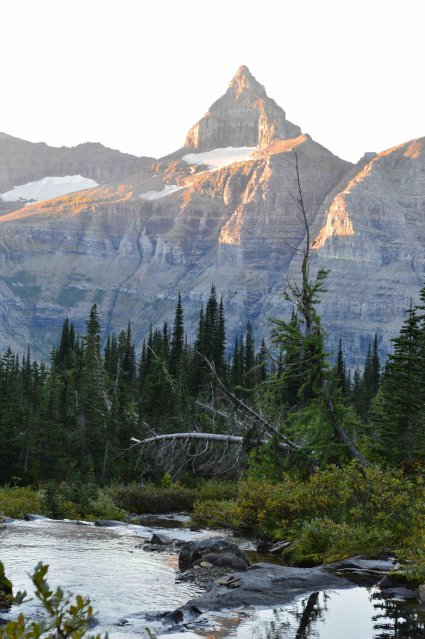
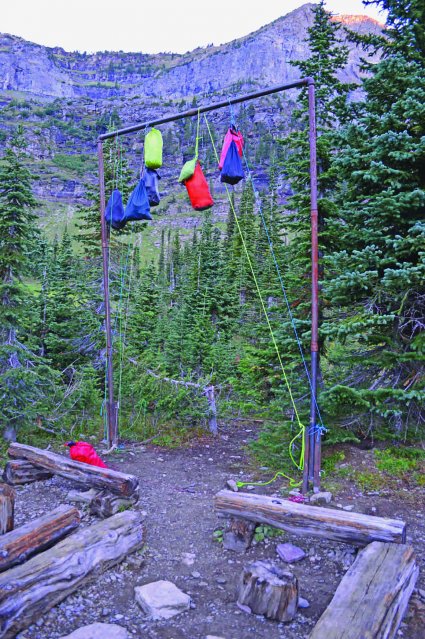
Add some text, Yo! Click this text box to change the text, style, color and fonts.
by Doug Freed
I had heard Hole in the Wall Campground was among the nicest and most scenic in the park. And since this park is Glacier National Park, you can bet it’s worth the effort to get there.
There are more than 1 million acres in Glacier National Park and not a one of them is anything but jaw-dropping gorgeous. In that 1 million acres are more than 150 named peaks higher than 8,000 feet, 131 named lakes and more than 700 miles of hiking trails to connect them all. The sheer density of peaks and the large, pristine lakes render the 14- or 15-hour drive from Grand Junction to Glacier easily worth it. It is a hiker’s paradise, a backpacker’s wonderland and a climber’s playpen.
The original plan was to split our hiking group to start at opposite ends of a long scenic loop. One group would leave from Bowman Lake, the other from Kintla Lake. Each group would canoe the long lakes (seven miles in the case of Bowman Lake), then hike from there to Hole in the Wall campground. At Hole in the Wall, we’d swap car keys and each continue our hikes in opposite directions, thus avoiding pre-trip car shuttles.
This sounded like fun and an interesting take on dealing with a loop hike and car shuttles, but some in this group of old friends don’t get to see each other very often. We opted for the more social up and back version of a hike to Hole in the Wall.
A trail runs along the bank of Bowman Lake for all of the seven miles to the Bowman Lake campground for those who would like to hike, but we opted to canoe. Most in the group had never combined a canoe trip with a hiking trip, so half the adventure would be in traveling by boat to start the trip. Little did we know what trip organizer Dan Stone had in store.
We picked September for the supposedly warm, clear days that typify that month in the Glacier area. We arrived at Stone’s house, a few hours south of Glacier, to steady rain. On the agenda that evening was tromping around Stone’s wooded property in the rain looking for two long poles we could use to lash three canoes together. Stone’s plan was to lash the canoes together and use one small outboard motor to race us across Bowman Lake. This blatant use of petrochemicals and spark plugs flew in the face of what some of us would consider a wilderness trip, but we had to admit it sounded sort of fun, and cutting poles in the forest to use in “building” our boat had an element of “adapt and innovate” that appealed to us.
A backcountry trip in Glacier takes planning. Backcountry permits must be applied for months in advance and there is no guarantee of getting one. First stop for any trip is the Apgar Ranger Station at the south end of splendid Lake McDonald to pay the necessary fees, pick up the permit and watch the mandatory grizzly bear video.
Bears. They call Glacier home. Hiking in Glacier is to hike with Griz. Because bear evidence is common and prevalent while hiking in Glacier, the thought of bears is never far from one’s mind. How fantastic would it be to see a grizzly bear? Or maybe not. Perhaps from a distance. It is mandatory for all hikers to carry bear spray when in the back country. We saw at least one hiker with a gun, but statistics clearly show that bear spray is far superior protection than a gun.
Bears, black bears and grizzly, are out there, so safety precautions need to be taken, but bears are not a good reason to stay home. According to statistics compiled by Backpacker Magazine, there have been 27 fatal bear attacks in North America since 2000, resulting in 29 deaths. Of those,15 were in Canada, three were in Alaska, two were in Tennessee, and single fatal attacks happened in New York, New Mexico, California, Pennsylvania, Colorado, Utah and Montana. Black bears were responsible for 17 of those attacks, grizzlies accounted for 10. The average is three fatalities a year out of the millions of people who travel in the backcountry each year or who live in or near bear habitat. Backpacker reports that 26 people are killed each year by dogs. Some 90 fatalities are attributed to lightning each year.
Because of the bears, all overnight backcountry travelers are required to camp in designated campgrounds. Each campground has a communal cooking and eating area and poles to hang food. These kitchens are away from tent sites. The idea is to keep all food or anything that might be of interest to a bear in a bag hung high on a pole in the kitchen. Nothing of interest to a bear should be in or around the tents. The thinking is even if a bear happens to wander in to camp, it will be more interested in the kitchen than a tent site. And if food is always out of reach, bears will learn there is no reward for visiting a campground and stay away.
We arrived at the Bowman Lake boat launch a charmed group. The on and off rain of the morning gave way to bluebird skies. Spirits soared as we gaped at the scenery. We lined up our canoes, lashed on the two poles and stood back to admire our tri-canoe. We impressed ourselves with our newfound nautical design skills. The boat was stable and ran true. We loaded up and launched. While the outboard was a little too loud to talk amongst ourselves comfortably, and emitted a slight but offensive exhaust smell, cruising across spectacular Bowman Lake under crystal skies with good friends was nothing less than sublime. In a little more than one hour we cruised the seven miles to the opposite end of Bowman Lake and our first night’s camp.
Because of how camps in Glacier are set up, the campgrounds are very social. Everybody ends up together in the kitchen area. There probably are people who prefer to be alone at these camp kitchens, but we didn’t meet any. We gregariously introduced ourselves to one and all. We shared food. We shared drinks. We shared laughs and the company of kindred spirits in a mountain paradise. Stone had prepared well by bringing along extra appetizers and drinks to share with the folks he knew we would meet at camp. We had a boat for this camp, remember, so weight was no issue on day one. Be prepared to interact socially with other hikers in Glacier camps and you will be richly rewarded with good company.
While weight was no issue on the first day, all that changed as we pared down gear for the backpack into Hole in the Wall campground the next morning. The good times kept rolling as we hit the trail first for the summit of Brown Pass, and eventually on to Hole in the Wall. The mandatory bear movie we watched prior to our trip indicated that talking on the trail is a good way to avoid surprising bears. We were in no danger of surprising a bear or any other creature. All six of us seemed to be talking at once. The weather was glorious, the scenery divine and the company terrific. We kept up a steady din of conversation most of the morning until the gradient of the trail steepened as Brown Pass got serious. The combination of a steep, switchbacking trail and hot mid-day sun beating down combined to quiet us down as each settled into a slog up Brown Pass.
The trail was hot and steep, but the scenery spectacular. Boulder Peak jutted skyward, adorned with the Hole in the Wall waterfall of many hundreds of feet. It was a walk through a picture postcard. We lunched at the Summit of Brown Pass at the base of Chapman Peak. From there we could see and Mt. Cleveland, 10,466 feet and the highest in the park. Mt. Cleveland is one of six peaks higher than 10,000 feet in the park.
From Brown Pass one can hike down to the Goat Haunt area of the park and world famous Waterton Lake, where one can board a boat and cruise into Canada. The adjacent Waterton Park in Canada was combined with Glacier National Park in 1932 to form the world’s first cross-border park called Waterton-Glacier International Peace Park. The park recognizes the long-held friendship between the U.S. and Canada but was also established in recognition that the geology, wildlife and general ecosystem is not affected by an international border. Together, the two parks total 1,720 square miles. It is the first international peace park ever developed of the 170 now in place around the globe.
Over lunch at the top of Brown Pass, we did what many do in Glacier. We sat and discussed ideas for more trips. Driving to Waterton Park and staying in the famed Prince of Wales Hotel would be fun, we agreed. Then we could take the boat across Waterton Lake to the trailheads at Goat Haunt and fit in some backpacking before going back to the hotel. So many options are available to the hiker in Glacier that this sort of discussion could go on forever.
Just because lunch was at the top of Brown Pass doesn’t mean its all down hill from there to Hole in the Wall. To the contrary, the trail climbs higher to the cirque that houses Hole in the Wall. The climb is worth it as the trail clings to the side of steep slopes. At the camp, Thunderbird Peak rises from across the valley looking like a Sentinel for all who camp at Hole in the Wall.
Our dinner companions that night were four park rangers who arrived to make some repairs to the pit toilet outhouse and to study what might be called camp sprawl. They were a good-natured group, if not a bit clouded in park bureaucracy. The weather was holding steady and gorgeous. Plans were made to climb Boulder Peak the next day.
Climbing Boulder Peak involves hiking the trail to the top of Boulder Pass before peeling off to pick a route up the step grass slopes to the summit. The Boulder Pass trail is worth the price of admission all by itself. It is another of Glacier’s spectacular trails. The sights from the summit of any peak in Glacier are an eye-popping view of hundreds of more peaks all around. It was possible to take in this view from a large stone throne built out of the slate-like rocks on the summit. We don’t know the full story of this throne. It didn’t insult our sensibilities, and struck us as rather clever, in fact, but in reporting its existence to one of the rangers, she expressed chagrin that this non-natural throne keeps appearing on the summit of Boulder Peak, even after she herself had previously dismantled it and scattered the rocks.
Some in the group stopped to swim in the glacier-fed lakes on the way down to wash off the trail-dust of three days. I chose the natural waterfall shower conveniently flowing just below camp. This camp cannot be improved upon.
Day four was the hike back to the head of Bowman Lake. Some in our group took the time and effort to climb Chapman Peak on the way down. We arrived back at the Bowman Lake camp where we had stashed provisions. Stone set about preparing his appetizers and drinks for our group and other campers. We ate well, enjoyed the company of new friends, built a fire and talked long into the night under the stars. Tomorrow we would re-build our tri-canoe and motor back to vehicles and civilization. We stayed up late that night. Nobody wanted this trip to end.
I had heard Hole in the Wall Campground was among the nicest and most scenic in the park. And since this park is Glacier National Park, you can bet it’s worth the effort to get there.
There are more than 1 million acres in Glacier National Park and not a one of them is anything but jaw-dropping gorgeous. In that 1 million acres are more than 150 named peaks higher than 8,000 feet, 131 named lakes and more than 700 miles of hiking trails to connect them all. The sheer density of peaks and the large, pristine lakes render the 14- or 15-hour drive from Grand Junction to Glacier easily worth it. It is a hiker’s paradise, a backpacker’s wonderland and a climber’s playpen.
The original plan was to split our hiking group to start at opposite ends of a long scenic loop. One group would leave from Bowman Lake, the other from Kintla Lake. Each group would canoe the long lakes (seven miles in the case of Bowman Lake), then hike from there to Hole in the Wall campground. At Hole in the Wall, we’d swap car keys and each continue our hikes in opposite directions, thus avoiding pre-trip car shuttles.
This sounded like fun and an interesting take on dealing with a loop hike and car shuttles, but some in this group of old friends don’t get to see each other very often. We opted for the more social up and back version of a hike to Hole in the Wall.
A trail runs along the bank of Bowman Lake for all of the seven miles to the Bowman Lake campground for those who would like to hike, but we opted to canoe. Most in the group had never combined a canoe trip with a hiking trip, so half the adventure would be in traveling by boat to start the trip. Little did we know what trip organizer Dan Stone had in store.
We picked September for the supposedly warm, clear days that typify that month in the Glacier area. We arrived at Stone’s house, a few hours south of Glacier, to steady rain. On the agenda that evening was tromping around Stone’s wooded property in the rain looking for two long poles we could use to lash three canoes together. Stone’s plan was to lash the canoes together and use one small outboard motor to race us across Bowman Lake. This blatant use of petrochemicals and spark plugs flew in the face of what some of us would consider a wilderness trip, but we had to admit it sounded sort of fun, and cutting poles in the forest to use in “building” our boat had an element of “adapt and innovate” that appealed to us.
A backcountry trip in Glacier takes planning. Backcountry permits must be applied for months in advance and there is no guarantee of getting one. First stop for any trip is the Apgar Ranger Station at the south end of splendid Lake McDonald to pay the necessary fees, pick up the permit and watch the mandatory grizzly bear video.
Bears. They call Glacier home. Hiking in Glacier is to hike with Griz. Because bear evidence is common and prevalent while hiking in Glacier, the thought of bears is never far from one’s mind. How fantastic would it be to see a grizzly bear? Or maybe not. Perhaps from a distance. It is mandatory for all hikers to carry bear spray when in the back country. We saw at least one hiker with a gun, but statistics clearly show that bear spray is far superior protection than a gun.
Bears, black bears and grizzly, are out there, so safety precautions need to be taken, but bears are not a good reason to stay home. According to statistics compiled by Backpacker Magazine, there have been 27 fatal bear attacks in North America since 2000, resulting in 29 deaths. Of those,15 were in Canada, three were in Alaska, two were in Tennessee, and single fatal attacks happened in New York, New Mexico, California, Pennsylvania, Colorado, Utah and Montana. Black bears were responsible for 17 of those attacks, grizzlies accounted for 10. The average is three fatalities a year out of the millions of people who travel in the backcountry each year or who live in or near bear habitat. Backpacker reports that 26 people are killed each year by dogs. Some 90 fatalities are attributed to lightning each year.
Because of the bears, all overnight backcountry travelers are required to camp in designated campgrounds. Each campground has a communal cooking and eating area and poles to hang food. These kitchens are away from tent sites. The idea is to keep all food or anything that might be of interest to a bear in a bag hung high on a pole in the kitchen. Nothing of interest to a bear should be in or around the tents. The thinking is even if a bear happens to wander in to camp, it will be more interested in the kitchen than a tent site. And if food is always out of reach, bears will learn there is no reward for visiting a campground and stay away.
We arrived at the Bowman Lake boat launch a charmed group. The on and off rain of the morning gave way to bluebird skies. Spirits soared as we gaped at the scenery. We lined up our canoes, lashed on the two poles and stood back to admire our tri-canoe. We impressed ourselves with our newfound nautical design skills. The boat was stable and ran true. We loaded up and launched. While the outboard was a little too loud to talk amongst ourselves comfortably, and emitted a slight but offensive exhaust smell, cruising across spectacular Bowman Lake under crystal skies with good friends was nothing less than sublime. In a little more than one hour we cruised the seven miles to the opposite end of Bowman Lake and our first night’s camp.
Because of how camps in Glacier are set up, the campgrounds are very social. Everybody ends up together in the kitchen area. There probably are people who prefer to be alone at these camp kitchens, but we didn’t meet any. We gregariously introduced ourselves to one and all. We shared food. We shared drinks. We shared laughs and the company of kindred spirits in a mountain paradise. Stone had prepared well by bringing along extra appetizers and drinks to share with the folks he knew we would meet at camp. We had a boat for this camp, remember, so weight was no issue on day one. Be prepared to interact socially with other hikers in Glacier camps and you will be richly rewarded with good company.
While weight was no issue on the first day, all that changed as we pared down gear for the backpack into Hole in the Wall campground the next morning. The good times kept rolling as we hit the trail first for the summit of Brown Pass, and eventually on to Hole in the Wall. The mandatory bear movie we watched prior to our trip indicated that talking on the trail is a good way to avoid surprising bears. We were in no danger of surprising a bear or any other creature. All six of us seemed to be talking at once. The weather was glorious, the scenery divine and the company terrific. We kept up a steady din of conversation most of the morning until the gradient of the trail steepened as Brown Pass got serious. The combination of a steep, switchbacking trail and hot mid-day sun beating down combined to quiet us down as each settled into a slog up Brown Pass.
The trail was hot and steep, but the scenery spectacular. Boulder Peak jutted skyward, adorned with the Hole in the Wall waterfall of many hundreds of feet. It was a walk through a picture postcard. We lunched at the Summit of Brown Pass at the base of Chapman Peak. From there we could see and Mt. Cleveland, 10,466 feet and the highest in the park. Mt. Cleveland is one of six peaks higher than 10,000 feet in the park.
From Brown Pass one can hike down to the Goat Haunt area of the park and world famous Waterton Lake, where one can board a boat and cruise into Canada. The adjacent Waterton Park in Canada was combined with Glacier National Park in 1932 to form the world’s first cross-border park called Waterton-Glacier International Peace Park. The park recognizes the long-held friendship between the U.S. and Canada but was also established in recognition that the geology, wildlife and general ecosystem is not affected by an international border. Together, the two parks total 1,720 square miles. It is the first international peace park ever developed of the 170 now in place around the globe.
Over lunch at the top of Brown Pass, we did what many do in Glacier. We sat and discussed ideas for more trips. Driving to Waterton Park and staying in the famed Prince of Wales Hotel would be fun, we agreed. Then we could take the boat across Waterton Lake to the trailheads at Goat Haunt and fit in some backpacking before going back to the hotel. So many options are available to the hiker in Glacier that this sort of discussion could go on forever.
Just because lunch was at the top of Brown Pass doesn’t mean its all down hill from there to Hole in the Wall. To the contrary, the trail climbs higher to the cirque that houses Hole in the Wall. The climb is worth it as the trail clings to the side of steep slopes. At the camp, Thunderbird Peak rises from across the valley looking like a Sentinel for all who camp at Hole in the Wall.
Our dinner companions that night were four park rangers who arrived to make some repairs to the pit toilet outhouse and to study what might be called camp sprawl. They were a good-natured group, if not a bit clouded in park bureaucracy. The weather was holding steady and gorgeous. Plans were made to climb Boulder Peak the next day.
Climbing Boulder Peak involves hiking the trail to the top of Boulder Pass before peeling off to pick a route up the step grass slopes to the summit. The Boulder Pass trail is worth the price of admission all by itself. It is another of Glacier’s spectacular trails. The sights from the summit of any peak in Glacier are an eye-popping view of hundreds of more peaks all around. It was possible to take in this view from a large stone throne built out of the slate-like rocks on the summit. We don’t know the full story of this throne. It didn’t insult our sensibilities, and struck us as rather clever, in fact, but in reporting its existence to one of the rangers, she expressed chagrin that this non-natural throne keeps appearing on the summit of Boulder Peak, even after she herself had previously dismantled it and scattered the rocks.
Some in the group stopped to swim in the glacier-fed lakes on the way down to wash off the trail-dust of three days. I chose the natural waterfall shower conveniently flowing just below camp. This camp cannot be improved upon.
Day four was the hike back to the head of Bowman Lake. Some in our group took the time and effort to climb Chapman Peak on the way down. We arrived back at the Bowman Lake camp where we had stashed provisions. Stone set about preparing his appetizers and drinks for our group and other campers. We ate well, enjoyed the company of new friends, built a fire and talked long into the night under the stars. Tomorrow we would re-build our tri-canoe and motor back to vehicles and civilization. We stayed up late that night. Nobody wanted this trip to end.
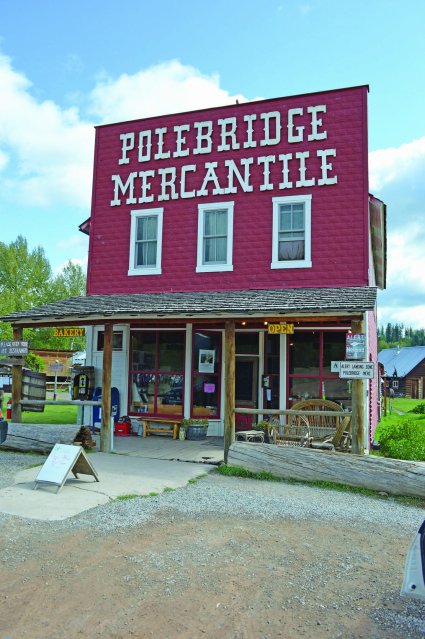
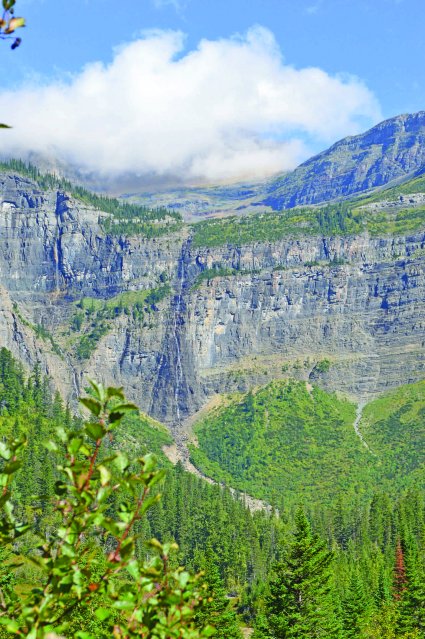
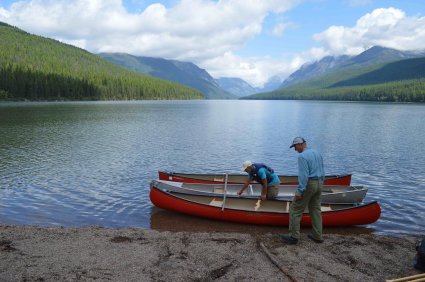
SEO provides traceable and measurable results
Posted
|
Views: 5,990
SEO stands for search engine optimization and is focused on organic results of search engines and the opportunity to generate free traffic to any business on the Internet, such as a website, blog or online store. Every company that wants to invest in the Internet must have a digital marketing plan, and that plan cannot miss an effective optimization strategy. So that you can tailor your website to the criteria that will be considered as the best sites for search term, thus achieving a better positioning in the natural results of search.
The SEO provides traceable and measurable results, regardless if you are an e-commerce or corporate site, so there is no doubt when it comes to ROI. Agencies and SEO specialists are able to control almost every aspect of its strategy, as increases in rankings, traffic and conversions. Analytics codes also provide the opportunity to deepen a more detailed level and verify demographic information and other engagement metrics for people who interacted with your site.

For e-commerce sites, SEO agencies can see which paths users took to complete the sale, through all the steps, from the keyword used in the search to purchase. For institutional sites, you can assign values to your conversions, as in filling out a form on the ‘Contact Us’ and thus calculate the conversion value in your SEO strategy.
There is a positive correlation between positioning of a website in search results and the amount of visitors coming through the results of the same search on Google, Yahoo, MSN or any other search site: the better the position, the greater the number of visitors. This relationship tends to be non-linear: studies show that the first results receive more than half of the visitors who perform a given search. Visit San Diego SEO Expert for more.

Yahoo tests a new SERP interface:
Posted
|
Views: 665
Take a look! Yahoo tests a new SERP interface: http://goo.gl/lF07y7
#Yahoo #Google
#Yahoo #Google
some text, Yo! Click this text box to change the text, style, color and fonts.
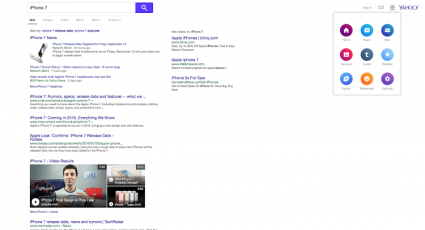
Google!
Posted
|
Views: 607
Check this out: Google now lets you explore U.S. National Parks via 360-degree virtual tours: http://goo.gl/0F3VA9 #google #nationalparks
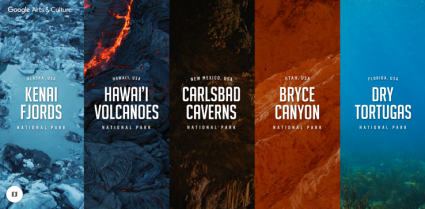
The Torchbearer September 2016
Posted
|
Views: 758
John lets out a sigh as his key turns in the lock; it’s been a stressful day at work. He kicks off his shoes and throws his jacket over the back of a chair. Moving languidly, he sets out for his living room, relishing the thought of relaxing. He sinks down into his couch, the most comfortable he’s been all day, and reaches for the cigar box which sits on his coffee table. As he pries it open, he flicks on the TV. Inside are rolling papers, ground weed and a few joints rolled in preparation. John chooses one and sets it to his lips. As he lights it, he takes a long draw.
Now John may sound familiar to you, in fact he may remind you of yourself. It doesn’t matter what job has John stressed, as we know that marijuana use is largely independent of socioeconomic status. He may be a mechanic or a stock broker. One trend we do know is that men are more likely to use marijuana than women.
This trend is most noticeable in older generations, as the ratio of men to women who partake steadily grows with age. There are many reasons why this might be the case: women on average use more prescribed pharmaceuticals, which is possible evidence of men self medicating. Men are disproportionately killed and injured on the job, and if we use this fact as a proxy for work related stress, this could explain why we see a surge of 40% usage in early adult males.
Looking at the numbers, more than half of all criminal charges related to drugs involved cannabis. It is well known that men are the majority of criminal offences. Putting these facts together with the stressful work conditions and disproportionate male use of marijuana, we arrive at a troublesome conclusion: Men are being sent to prison and fined for using a substance less harmful than alcohol to de-stress after contributing to society. Men like John are being prevented from fully participating in society because of how they choose to relax.
This is ludicrous on so many levels it beggars belief. The government is telling us what we can and cannot do with our own bodies, some of our most productive individuals are hobbled in their efforts to contribute, and the court systems continue to disproportionately punish men. Not only is this anti liberal and anti freedom, it is counter productive and absolutely pointless. The only thing an end to drug prohibition would harm is the yearly bonuses of the drug enforcement officers.
Now John may sound familiar to you, in fact he may remind you of yourself. It doesn’t matter what job has John stressed, as we know that marijuana use is largely independent of socioeconomic status. He may be a mechanic or a stock broker. One trend we do know is that men are more likely to use marijuana than women.
This trend is most noticeable in older generations, as the ratio of men to women who partake steadily grows with age. There are many reasons why this might be the case: women on average use more prescribed pharmaceuticals, which is possible evidence of men self medicating. Men are disproportionately killed and injured on the job, and if we use this fact as a proxy for work related stress, this could explain why we see a surge of 40% usage in early adult males.
Looking at the numbers, more than half of all criminal charges related to drugs involved cannabis. It is well known that men are the majority of criminal offences. Putting these facts together with the stressful work conditions and disproportionate male use of marijuana, we arrive at a troublesome conclusion: Men are being sent to prison and fined for using a substance less harmful than alcohol to de-stress after contributing to society. Men like John are being prevented from fully participating in society because of how they choose to relax.
This is ludicrous on so many levels it beggars belief. The government is telling us what we can and cannot do with our own bodies, some of our most productive individuals are hobbled in their efforts to contribute, and the court systems continue to disproportionately punish men. Not only is this anti liberal and anti freedom, it is counter productive and absolutely pointless. The only thing an end to drug prohibition would harm is the yearly bonuses of the drug enforcement officers.
Marc Emery himself spent more than four years in prison for a victimless crime. Rather than being allowed to grow his business, which would have provided jobs and livelihood, he was removed from society and incarcerated. How does this protect anyone? The answer is it doesn’t. The government has simply swollen too large for its role, and is looking to use authoritarian measures to arbitrarily prevent the citizenry from enjoying life. When the government begins to institute morality as law, it’s time to take a long hard look at our society.
Justin Trudeau has promised to address the issue of marijuana legalization. He has also promised to address the issues facing women, and managed to form a cabinet with equal numbers of both genders. He is to be applauded for these laudable achievements. One can only hope that he continues to fulfil his promises, and ends the pointless prohibition against marijuana. By doing so he will also help address a major issue facing men in our society. As a noted egalitarian, this is what we should expect from our prime minister. After all it is 2016.
Justin Trudeau has promised to address the issue of marijuana legalization. He has also promised to address the issues facing women, and managed to form a cabinet with equal numbers of both genders. He is to be applauded for these laudable achievements. One can only hope that he continues to fulfil his promises, and ends the pointless prohibition against marijuana. By doing so he will also help address a major issue facing men in our society. As a noted egalitarian, this is what we should expect from our prime minister. After all it is 2016.
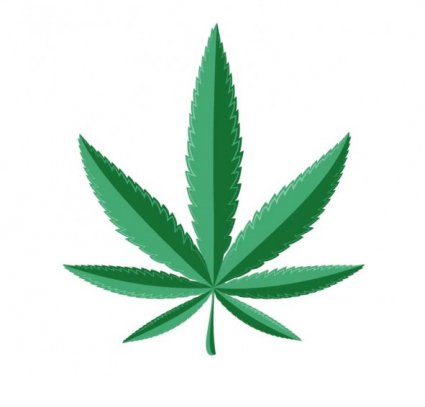

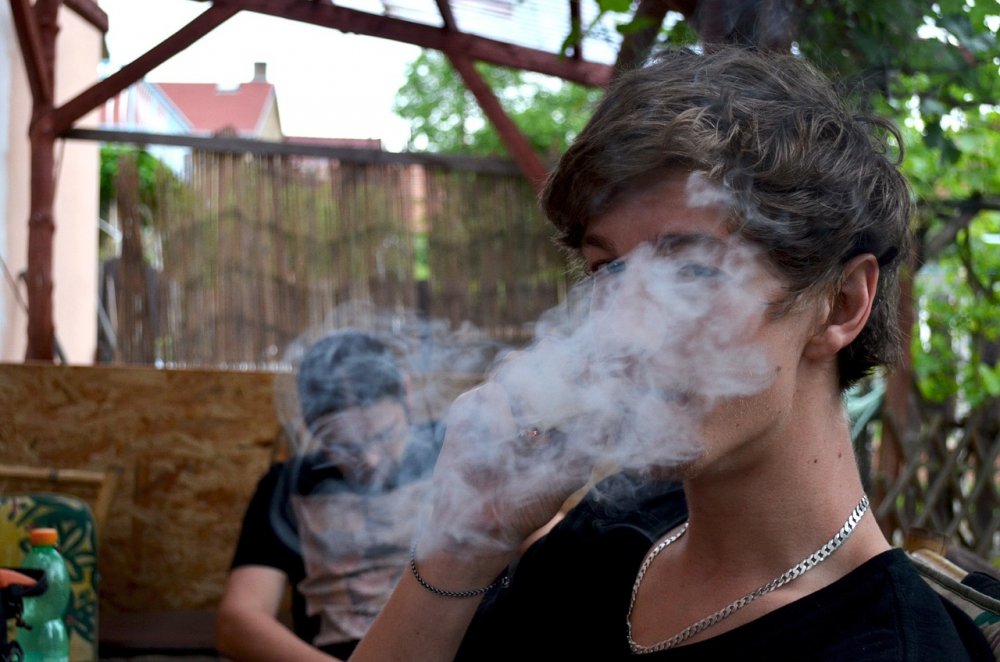
"Men are more likely to use marijuana than women."
Weed and Men's Rights
by Jesse Velay-Vitow
by Jesse Velay-Vitow

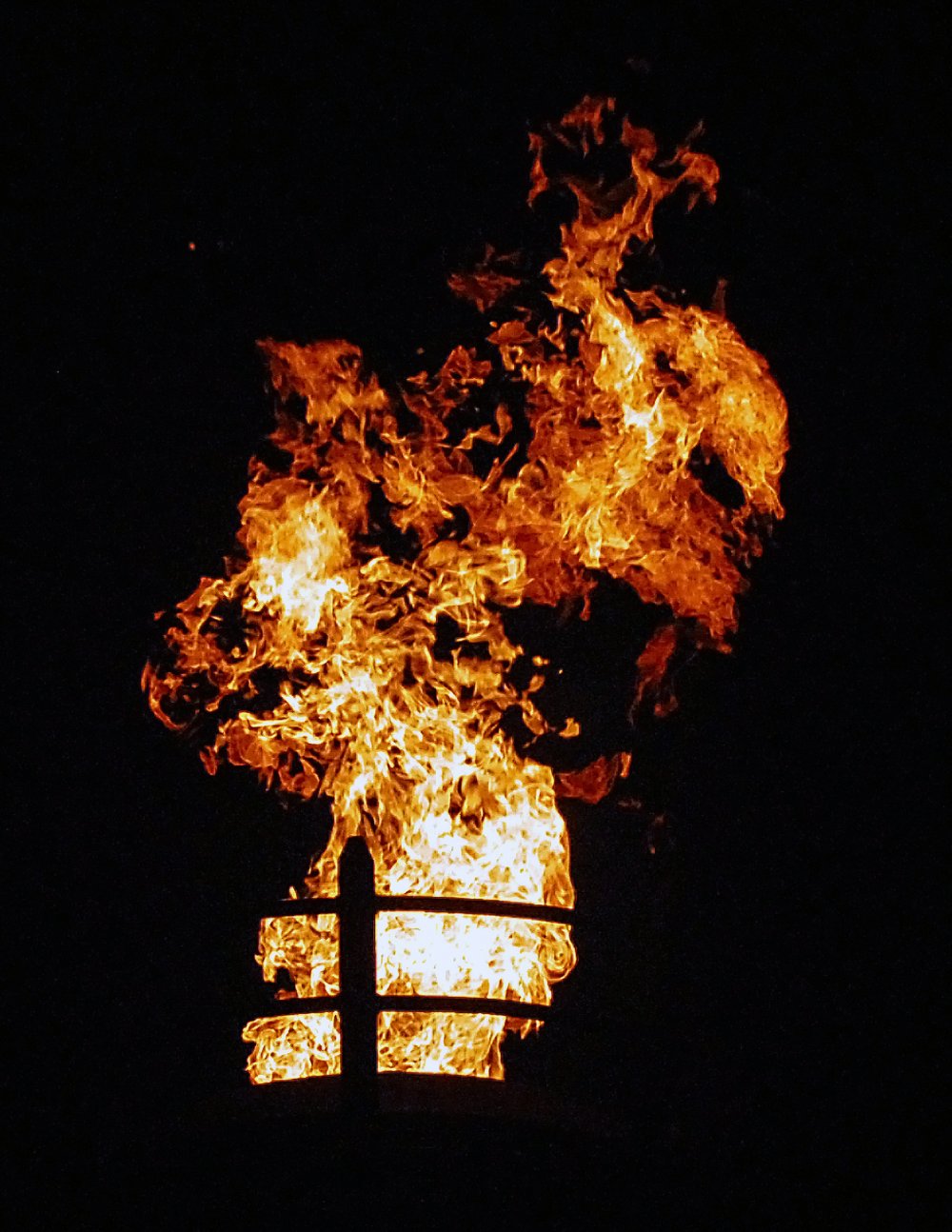
Protip:
Slap that F11 for best viewing experience!
Slap that F11 for best viewing experience!
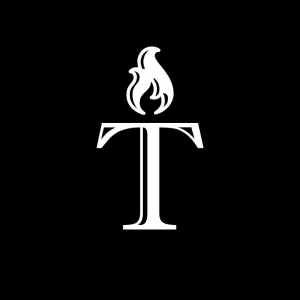
The Torch Bearer
Top 3 libertarian Anime!!
Trinity Western Law Degrees Unrecognized!
Do men smoke more weed?
Religious freedom and sexual freedom are, more often than not, at odds in society. This familiar conflict is currently playing out in provincial courts across Canada.
Trinity Western (a private, Evangelical university in Langley, BC) is being denied the ability to accredit its law school graduates — consequentially invalidating their degrees. The Law Societies of various provinces, who evaluate and determine which schools are fit to accredit, hold that TWU’s code of conduct (their “Community Covenant”) is discriminatory, and that TWU is thus not qualified to accredit. The contended rule states “sexual intimacy that violates the sacredness of marriage between a man and a woman” is prohibited.
While the Federation of Law Societies of Canada — having federal jurisdiction — has approved of TWU’s law program, the provincial law societies of British Columbia, Ontario and Nova Scotia denied it — overriding the FLSC’s approval in their respective jurisdictions. TWU is still receiving accreditation from the other provinces.
The provincial Law Societies hold that in order to qualify for accreditation, a law school must, through its curriculum, show that its graduates either maintain or advance the standard of the legal profession in accordance with the public interest. The “public interest” is a vague notion, but the qualifications can be understood as the graduates needing to not only be well- educated, but also be educated in a moral manner that ultimately serves the good of the public.
Initial evaluations of TWU’s curriculum have qualified for accreditation; however, upon review of the Community Covenant, it was reconsidered and revoked. The issue was, then, not with the quality of education (as the curriculum on its own qualified), but with the values of TWU (stated in their Covenant), which are — apparently — contrary to the public interest.
The implications of this rendering by the Law Societies are significant, as they equate to condemning religious values. By stating that these values are contrary to the public interest, the Law Societies are not only asserting that these values are immoral, but are also imposing legal force onto this judgement. Furthermore, this rendering suggests that those educated with these values are unfit to serve in the legal profession — thus discriminating against a class of people holding particular beliefs. In other words, the rendering of the Law Societies extends much further than this case — giving legal force to moral judgements on the values of particular people.
By this rendering, the Law Societies fail to make an important distinction between a code of conduct and a curriculum. They assume that the code of conduct is negatively affecting the graduates’ abilities to perform in the legal profession. That is to say, because their private beliefs are in disagreement with homosexuality (and other alternative forms of sexuality), it is against the public interest to allow them to perform a function in the public sphere. The consequence of this assumption is that one’s private beliefs and values are grounds for discrimination, and disqualify individuals from certain professions.
The curriculum — i.e. what they will actually be bringing to the public sphere— is independent of the code of conduct, and cannot be proven to be affected by it. The curriculum is the proper, relevant gauge of the graduates’ education and ability — not their private beliefs. Perhaps if the curriculum included the tenet, the Law Societies would have a fair case; but it does not, and as such, the Law Societies are not condemning the graduates education, but their faith — in this case, Evangelicalism.
It is dangerous to assume that one’s faith is immoral, and, further, that they are immoral by extension. Whether their religious values will affect their actions in the public sphere is not to be hypothesized and assumed, but can only be fairly judged according to how they perform their action after they’ve actually perform that action.
The Law Societies condemnation is thus misguided in two respects: (1) they have made moral judgements with legal force on the private beliefs and values of a certain class in society; (2) the beliefs and values condemned are erroneously implicated onto the curriculum, when, in fact, they belong to the religious faith the institution is founded upon.
As it stands, after a series of reversals, the Supreme Court of British Columbia ruled in favour of TWU in 2015 — however, the British Columbia Law Society has, as of June 2016, motioned for an appeal, and the case is back in court. In Ontario, the Court of Appeal rejected TWU’s appeal, upholding the Ontario Divisional Court’s decision in favour of the Law Society of Upper Canada from 2015; the case is now being taken to the Supreme Court of Canada. In Nova Scotia, the case has been settled by the Supreme Court of Nova Scotia in favour of TWU.
Justice James Campbell of the Supreme Court of Nova Scotia, in his rendering, stated that:
The Charter is not a blueprint for moral conformity. Its purpose is to protect the citizen from the power of the state, not to enforce compliance by citizens or private institutions with the moral judgments of the state.
While this has surely been good news for TWU, this case — and its nation-wide implications —is far from over.
Trinity Western (a private, Evangelical university in Langley, BC) is being denied the ability to accredit its law school graduates — consequentially invalidating their degrees. The Law Societies of various provinces, who evaluate and determine which schools are fit to accredit, hold that TWU’s code of conduct (their “Community Covenant”) is discriminatory, and that TWU is thus not qualified to accredit. The contended rule states “sexual intimacy that violates the sacredness of marriage between a man and a woman” is prohibited.
While the Federation of Law Societies of Canada — having federal jurisdiction — has approved of TWU’s law program, the provincial law societies of British Columbia, Ontario and Nova Scotia denied it — overriding the FLSC’s approval in their respective jurisdictions. TWU is still receiving accreditation from the other provinces.
The provincial Law Societies hold that in order to qualify for accreditation, a law school must, through its curriculum, show that its graduates either maintain or advance the standard of the legal profession in accordance with the public interest. The “public interest” is a vague notion, but the qualifications can be understood as the graduates needing to not only be well- educated, but also be educated in a moral manner that ultimately serves the good of the public.
Initial evaluations of TWU’s curriculum have qualified for accreditation; however, upon review of the Community Covenant, it was reconsidered and revoked. The issue was, then, not with the quality of education (as the curriculum on its own qualified), but with the values of TWU (stated in their Covenant), which are — apparently — contrary to the public interest.
The implications of this rendering by the Law Societies are significant, as they equate to condemning religious values. By stating that these values are contrary to the public interest, the Law Societies are not only asserting that these values are immoral, but are also imposing legal force onto this judgement. Furthermore, this rendering suggests that those educated with these values are unfit to serve in the legal profession — thus discriminating against a class of people holding particular beliefs. In other words, the rendering of the Law Societies extends much further than this case — giving legal force to moral judgements on the values of particular people.
By this rendering, the Law Societies fail to make an important distinction between a code of conduct and a curriculum. They assume that the code of conduct is negatively affecting the graduates’ abilities to perform in the legal profession. That is to say, because their private beliefs are in disagreement with homosexuality (and other alternative forms of sexuality), it is against the public interest to allow them to perform a function in the public sphere. The consequence of this assumption is that one’s private beliefs and values are grounds for discrimination, and disqualify individuals from certain professions.
The curriculum — i.e. what they will actually be bringing to the public sphere— is independent of the code of conduct, and cannot be proven to be affected by it. The curriculum is the proper, relevant gauge of the graduates’ education and ability — not their private beliefs. Perhaps if the curriculum included the tenet, the Law Societies would have a fair case; but it does not, and as such, the Law Societies are not condemning the graduates education, but their faith — in this case, Evangelicalism.
It is dangerous to assume that one’s faith is immoral, and, further, that they are immoral by extension. Whether their religious values will affect their actions in the public sphere is not to be hypothesized and assumed, but can only be fairly judged according to how they perform their action after they’ve actually perform that action.
The Law Societies condemnation is thus misguided in two respects: (1) they have made moral judgements with legal force on the private beliefs and values of a certain class in society; (2) the beliefs and values condemned are erroneously implicated onto the curriculum, when, in fact, they belong to the religious faith the institution is founded upon.
As it stands, after a series of reversals, the Supreme Court of British Columbia ruled in favour of TWU in 2015 — however, the British Columbia Law Society has, as of June 2016, motioned for an appeal, and the case is back in court. In Ontario, the Court of Appeal rejected TWU’s appeal, upholding the Ontario Divisional Court’s decision in favour of the Law Society of Upper Canada from 2015; the case is now being taken to the Supreme Court of Canada. In Nova Scotia, the case has been settled by the Supreme Court of Nova Scotia in favour of TWU.
Justice James Campbell of the Supreme Court of Nova Scotia, in his rendering, stated that:
The Charter is not a blueprint for moral conformity. Its purpose is to protect the citizen from the power of the state, not to enforce compliance by citizens or private institutions with the moral judgments of the state.
While this has surely been good news for TWU, this case — and its nation-wide implications —is far from over.
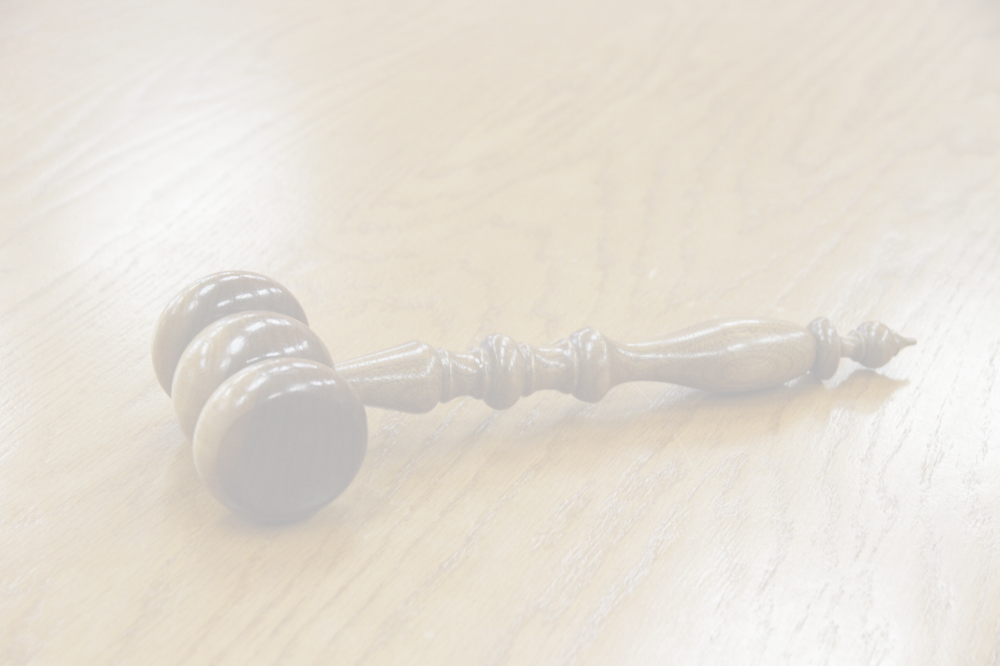
Are you thinking about hiring a tax attorney to help with your tax problem? You might want to know the benefits
Posted
|
Views: 13,255
Are you thinking about hiring a tax attorney to help with your tax problem? You might want to know the benefits

• You may end up overpaying the tax liability if you don’t get assistance from expert and because the IRS has acted aggressively or inappropriately
• As your agent, a tax attorney can protect your assets by helping you identify and avoid potential tax risks
• A tax attorney deals with the legal aspects of financial proceedings including IRS criminal investigations, or tax fraud investigations, payroll taxation issues, and international business tax laws
• Tax defense attorneys can protect you from invasive or coercive IRS agent techniques
• Hiring an attorney will make sure you don't run into tax problems in the future
• Tax attorneys are trained, licensed and experienced to handle the technicalities involved in the tax resolution and settlement process
• If you learn that you’re the target of an IRS criminal investigation, you’ll want to hire a tax lawyer immediately
• Federal and state tax laws change frequently, so you will need the professionals to keep you updated • Communicating with the IRS does require a certain amount of fluency
. An attorney can successfully communicate your messages with the agency. Your attorney can send letters, make phone calls, compose emails and otherwise speak for her/his client. Visit Tax Attorney San Diego portal for more.
